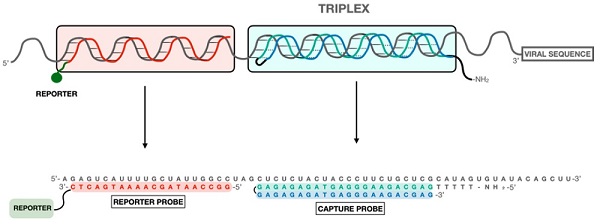Researchers from the Cancer therapy group, the Institute for Advanced Chemistry of Catalonia (IQAC-CSIC), the Institute of Microelectronics of Barcelona (IMB-CNM-CSIC) and the Aragon Nanoscience and Materials Institute of Aragon (INMA) —a joint institute of the CSIC and the University of Zaragoza— have developed a new method to detect RNA viruses based on the triplex-forming probe technology. This innovative methodology opens up new options for detecting viruses such as SARS-CoV-2, the influenza A virus (H1N1) or the respiratory syncytial virus (RSV), a pathogen that affects newborn babies and requires careful differential diagnosis.
Aviñó, A.; Cuestas-Ayllón, C.; Gutiérrez-Capitán, M.; Vilaplana, L.; Grazu, V.; Noé, V.; Balada, E.; Baldi, A.; Félix, A. J.; Aubets, E.; Valiuska, S.; Domínguez, A.; Gargallo, R.; Eritja, R.; Marco, M. P.; Fernández-Sánchez, C.; Martínez de la Fuente, J.; Ciudad, C. J. «Detection of SARS-CoV-2 Virus by Triplex Enhanced Nucleic Acid Detection Assay (TENADA)». International Journal of Molecular Sciences, December 2022. Doi: 10.3390/ijms232315258
Read more: UB News
Image: The method can also be applied to identify other viral pathogens that cause serious diseases in the population.

